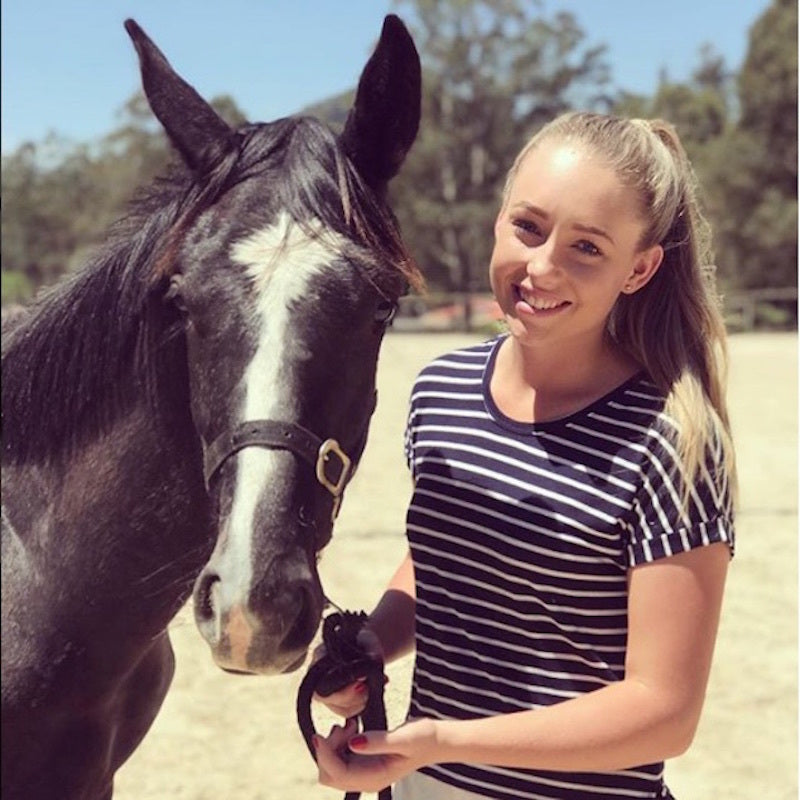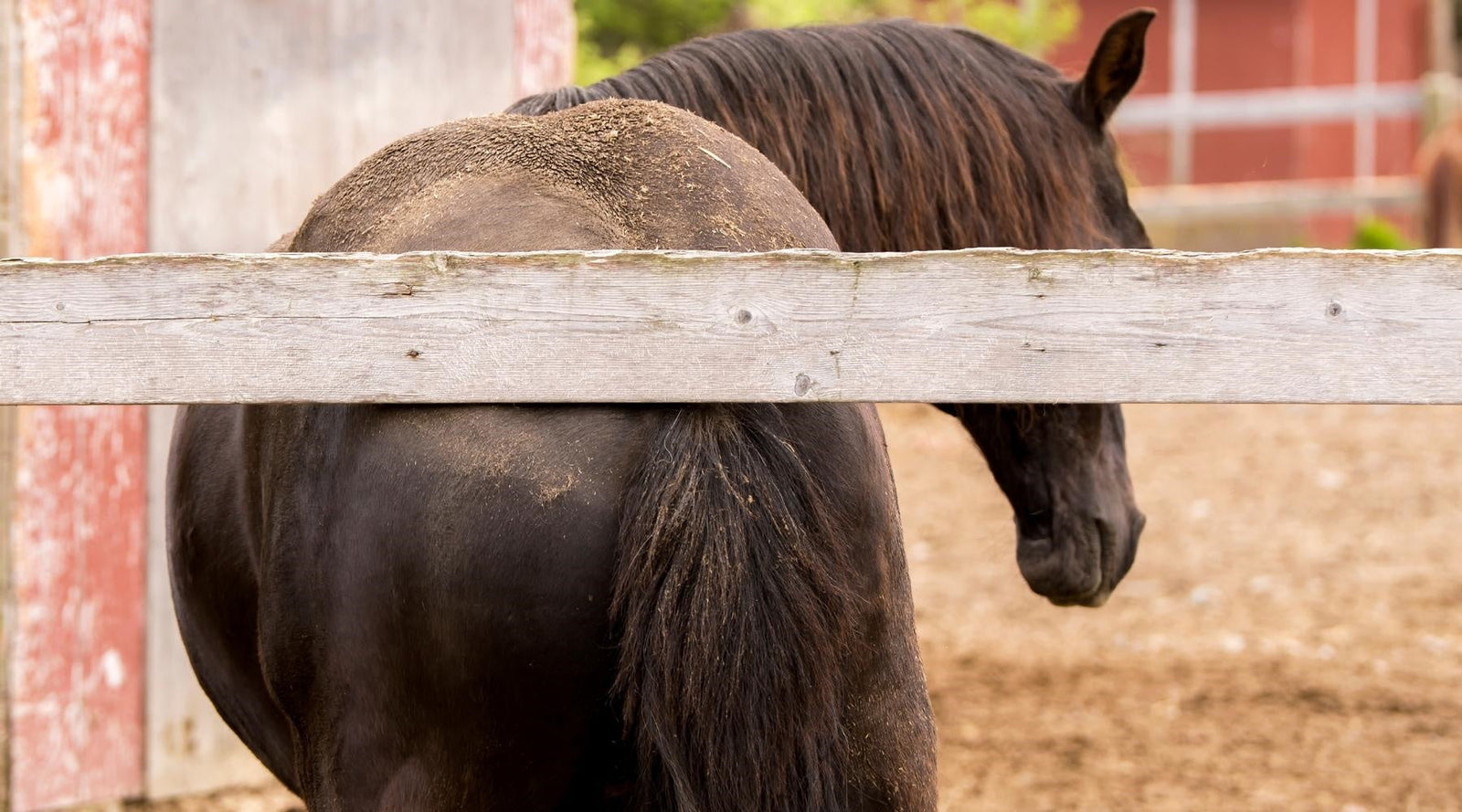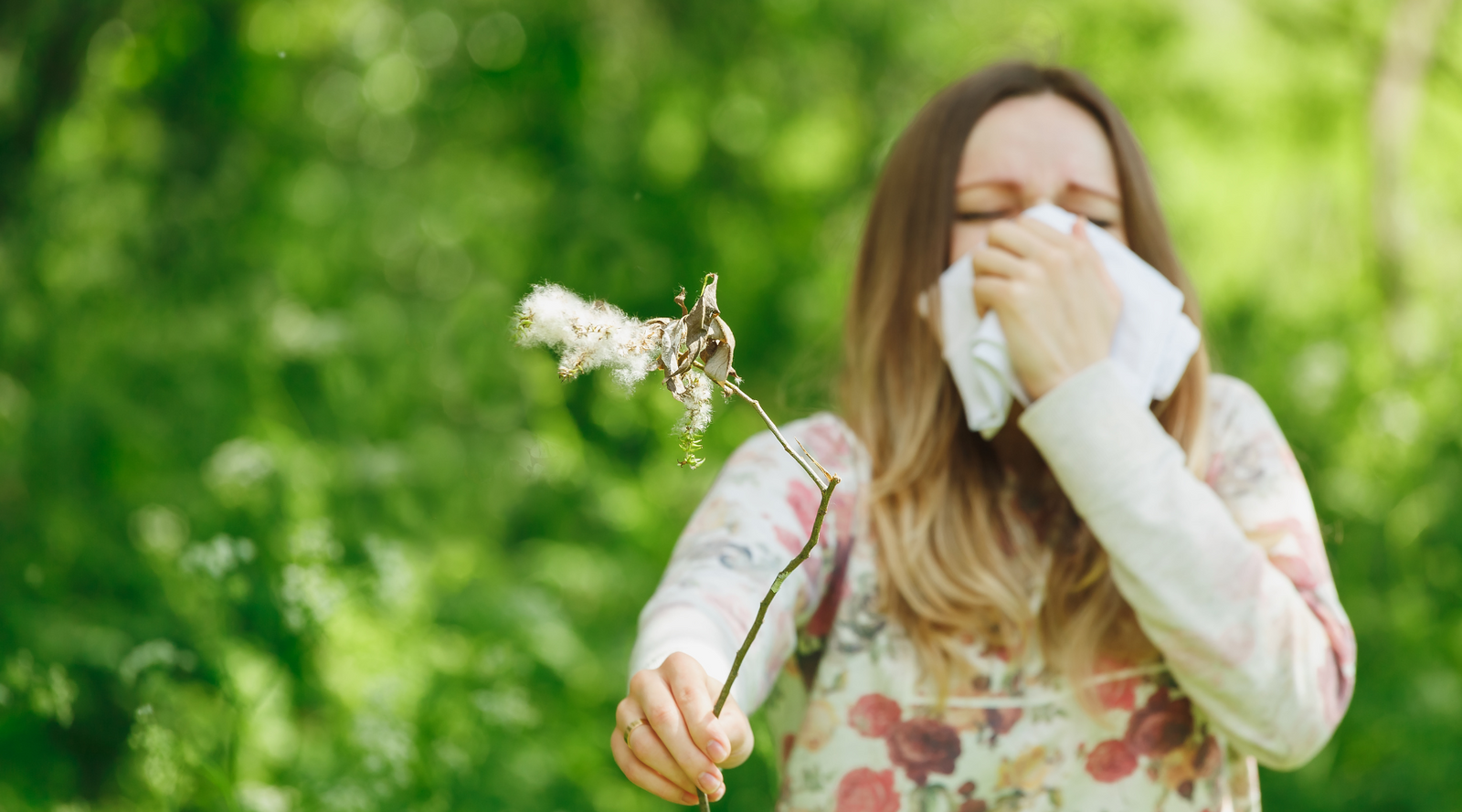Horse & Rider
Mud Fever – our guide to prevention and management
by Fiona Lane May 05, 2025

Key Highlights
· Mud Fever, Greasy Heel, Scratches & Rain Scald - officially called Pastern Dermatitis - are all caused by the Dermatophilus congolensis bacteria that thrives in wet, muddy winter conditions.
· Broken skin allows bacteria to enter the horse's body - mostly on the lower leg or fetlock, setting up an infection.
· Treating Mud Fever / Greasy Heel can be expensive, messy and sometimes requires touching sensitive areas.
· Photosensitivity or Mud Fever: When symptoms recur or seem to appear overnight, your horse may have photosensitivity – a different condition that causes the broken skin that enables bacteria to enter.
· Easy support for prevention and management: Our oral Mud & Rain remedy offers a no mess, no stress way to support the prevention and management of Mud Fever, Greasy Heel, Scratches and Rain Scald.
· Read testimonials and see before & after photos from customers who have used our natural Mud & Rain remedy.
Introduction
Winter is a challenging time for our horses, especially those that are prone to troublesome winter ailments like Mud Fever / Greasy Heel. While the symptoms aren’t pleasant, the treatment can often be downright distressing for both horses and owners. We’ve worked with thousands of cases all over the world, so here’s our guide to using our professionally formulated oral remedy to help with prevention and management of Mud Fever and Greasy Heel.
Warning – you may find some of the before photos at the end of this blog post distressing.
The best way we can show how this remedy helps is by sharing before and after photos. We’ve included a few at the end of this blog post but please be warned that you may find some of the photos confronting.
What is Mud Fever / Greasy Heel?
Mud Fever / Greasy Heel – or Pastern Dermatitis as it is officially known - is caused by a bacteria called Dermatophilus congolensis that lives in wet and muddy conditions. Depending on where you live, this condition can also be called equine dermatitis, rain scald, rain rot, mud rash or scratches. While it’s always present, the problems start when it enters the body, usually through broken skin on the lower leg and fetlock, where it can cause inflammation, oozy, scabby sores, and in severe cases, swelling and lameness.
These same bacteria can cause issues on a horse's back or hindquarters. While this is more commonly called Rain Scald, the symptoms are often the same.
How do horses get Mud Fever / Greasy Heel?
Mud Fever / Greasy Heel and Rain Scald are most common in the winter or rainy season. The constant dampness softens the skin, and that makes it prone to damage such as abrasions, small cuts, scrapes, and cracking. It’s this broken skin that lets bacteria in.
While more than one horse on the same pasture is often affected, Mud Fever isn’t contagious. Some soil types are more prone to hosting these bacteria than others, which leads to the whole herd often being afflicted.
How can Mud Fever / Greasy Heel be treated?
There are many different methods for treating Mud Fever / Greasy Heel, some of which are expensive and can cause stress and discomfort for both the horse and its owner. Most methods focus on the external symptoms and involve scraping off scabs and applying messy creams and bandages to often tender skin. These methods can be uncomfortable for the horse, and downright dangerous for whoever is carrying out the treatment!
Our Mud & Rain remedy is given orally and is professionally formulated to support a normal immune response to the most common pathogens associated with Mud Fever / Greasy Heel. It helps with healing from the inside out and is part of our mission to provide no sting, no mess and stress solutions to everyday health conditions.
This remedy can be dosed straight into the mouth or on a treat using our pump bottle or use our jerry can formulation to dose onto feed or into the water trough to provide cost effective cover for multiple animals. If you’d like to know more about how oral dosing works, we’ve answered the most commonly asked questions over on our blog.
Should the scabs be removed?
We know they are unsightly, but if you are using our Mud & Rain remedy, we recommend leaving the scabs in place - they’ll dry up and fall away once the skin underneath has healed. In our experience observing the thousands of cases we’ve dealt with over the years, this should take 2-3 weeks on fresh areas and a little longer on old scabs.
What if Mud Fever keeps recurring?
If symptoms that resemble Mud Fever/Greasy Heel appear overnight or keep recurring despite careful management, that's a sign that you might actually be dealing with Photosensitivity.
Photosensitivity occurs when horses ingest fluorescing chemicals in lush green grass – like chlorophyll. When digested, these compounds pass into the bloodstream where they can be easily activated by the sun’s ultraviolet rays, causing a type of sunburn that occurs from the inside out. The resulting broken skin can allow bacteria to enter, setting up an infection.
Read More on the blog: Does my horse have Mud Fever/Greasy Heel or Photosensitivity?
Can Mud Fever be prevented?
We think so, and so do lots of our customers! We recommend dosing once a week with our remedy before the wet weather arrives. Most horses love the sweet taste so are happy for the remedy to be pumped straight into their mouth. The active ingredients just need to contact a mucous membrane – such as the gums, tongue, or lips – to start doing their job.
You’ll still need to keep an eye on your horses’ legs and increase the dosing frequency at the first sign of any trouble.
Can an oral remedy really work?
Lots of our customers have had success using our oral Mud & Rain remedy, and love to send us before and after photos! So don’t take our word for it – take a look below or read the reviews on our product page!
Warning – you may find some of these photos distressing
We know the ‘before’ photos can be confronting, but it’s hard to show you the results our customers have achieved without including them.
Testimonials
Savannah S
“I’ve been so excited to share before and after photos with you!
“My three-year-old TB came to me with rain scald on all four of his white socks and voila, after three months he has gorgeous wee white legs that look nothing like they did in Jan!
“At first they appeared to be like “burns” and we opted for the Photosensitivity tonic. With great success after around 8 weeks, the burns around the heel bulb subsided, and we were left with the rain scald on the sides of this legs. I was absolutely stoked!
“We then moved on to Mud & Rain where slowly his scabs dried up, dropped off and revealed healthy skin with fabulous hair growth underneath!
“I’m happy to say now, we have just a few scabs left to drop, then we will go down to the maintenance dose! Whoop whoop…..
“Thanks to your fabulous remedies, my three-year-old had such a lovely experience cleaning up his rain scald, that was so non-invasive. When we give the horses the “tools” their bodies need, they can heal on their own, right? I had absolutely no doubts in your products from the start, but looking back at the pictures, it’s easy to forget where we came from! Thanks HEAPS team!”

Leanne J
“Thank you!!!!!! NuNu has gone from three-legged lam with a hot swollen, scabby leg that EVERYTHING I tried just made worse, to sound, happy and scab free after 3 weeks. Scabs are just falling off. It must also taste pretty darn good too as he is the worst to get stuff in his mouth, and he literally snatches the bottles trying to get more! I’ll admit I was a bit skeptical but I’m very impressed and very happy!! Thanks!!”

Amy H
“This is my second purchase of Mud & Rain, after an unusual amount of rainfall this summer (and humidity!). The first bottle I bought had lasted over a year as I was using it as a preventative every other day through the winter. My mare hates me picking at her scabs, so this is the perfect solution – not to mention a lot easier than some routines I’ve heard! Within 7-10 days scabs were drying and falling off. Easy as. Highly recommend!!!”

Polly M
“My 28-year-old mare has had Mud Fever for at least 4 years, and I have literally spent thousands of dollars on treatments both oral and topical but it never quite goes away and then it’s back with a vengeance. She’s been on Mud & Rain now for about 10 weeks and you can see the massive improvement. I’m so excited.”

Before & After Photos
Images provided by Shani

Images provided by Samarra W

Images provided by Karina M

Images provided by Hope B

We’ve added more customer before and after photos and testimonials to this blog post, or head to our product page to find out more about this remedy and read hundreds more customer reviews!
Here’s to a no sting, no mess and no stress winter!
General Disclaimer: Always follow dosing instructions. Our remedies are formulated to support the natural immune system of horses, pets, livestock, and people. We do not claim to treat, medicate, or cure any health conditions. If you are worried an animal may be in pain or suffering, please contact your veterinarian.




